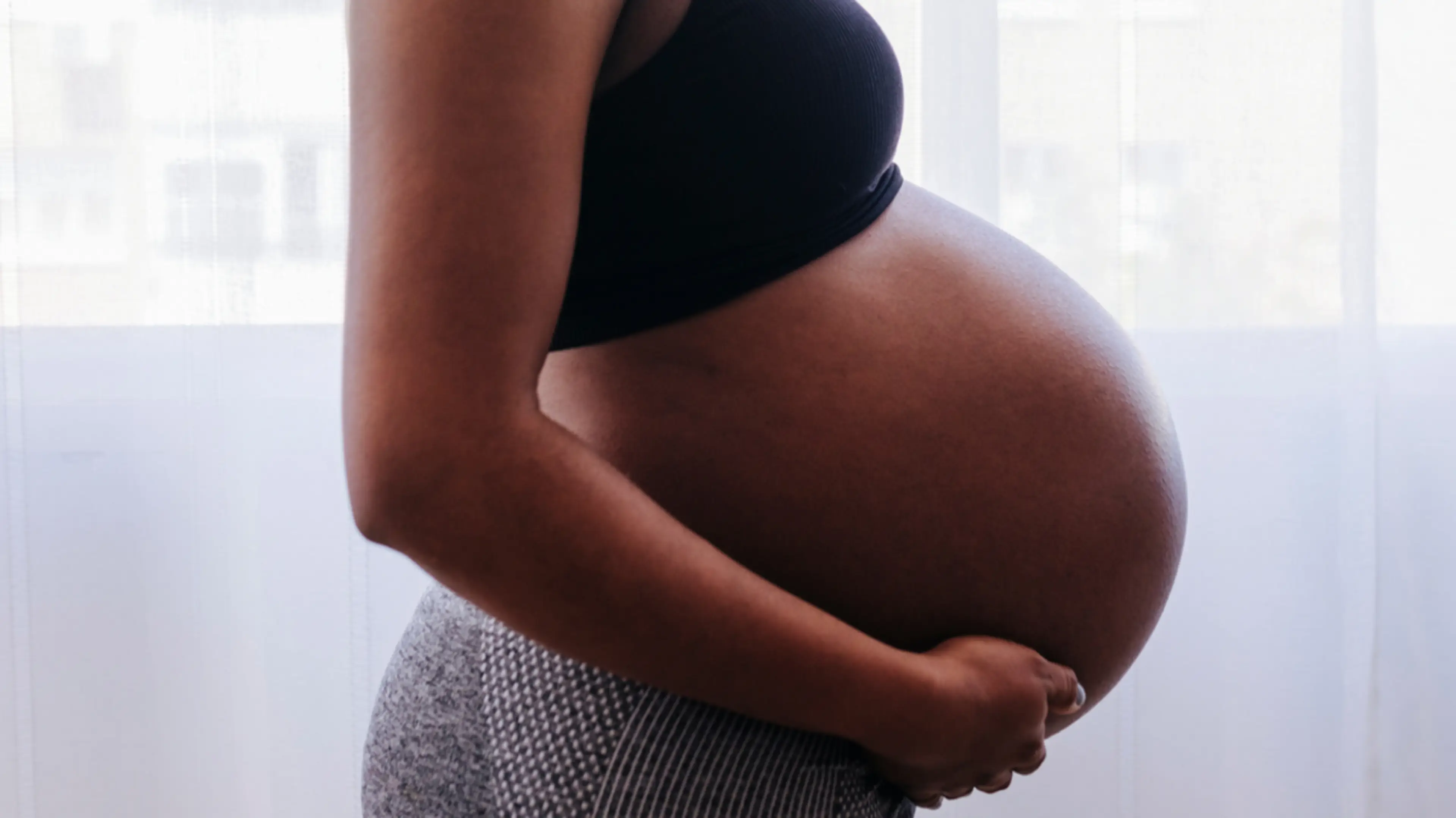Low back pain, bladder leakage, abdominal separation…you’ve heard it all before, right? They’re common and entirely normal parts of pregnancy that are pretty much guaranteed for many pregnant people.
But just because pregnancy-related pain and discomfort are normal doesn’t mean it has to be your new normal. Symptoms like muscle pain and weakness can be treated both during and after pregnancy by physical therapists1 who specialize in working with pregnant people.
Even if you aren’t experiencing any pain or uncomfortable symptoms, you might still consider prenatal physical therapy for its other benefits, especially if you’re considering having a vaginal delivery. “If you think about the actual delivery process, you are either having a major abdominal surgery or your pelvic floor muscles are being stretched up to three times their length, sometimes with actual tearing,” says Doctor of Physical Therapy Lisa Smiley, owner of Monumental Physical Therapy4 . “We teach ways to reduce perineal tearing through mobilization and positioning, how to relax the pelvic floor muscles for delivery, and breathing techniques during pushing.”
Wondering if physical therapy is right for you during your pregnancy or postpartum recovery? Keep reading to learn all about what a prenatal physical therapist can help treat, what a typical PT appointment looks like, and when to avoid physical therapy based on conditions you may have.
What Pregnancy Symptoms Can Prenatal Physical Therapy Help Treat?
Low back pain
Sciatica
Pubic symphysis pain
Sacroiliac joint pain
Pelvic floor issues such as bladder or bowel leakage, constipation, hemorrhoids, and varicose veins in the vulva
If you’re experiencing any of these, one thing to keep in mind is that it’s better to seek treatment sooner rather than later. Waiting months or even years can mean longer treatment and recovery time, not to mention greater risk of injury and prolonged discomfort.
How Can Physical Therapy Help With Postpartum Symptoms?
During what’s sometimes called the “fourth trimester” (the first 12 weeks after giving birth), whether you’ve had a vaginal birth or a C-section, you may notice some new side effects cropping up. Bladder leakage, vaginal heaviness or pressure, and pelvic pain, including pain during sex, are fairly common during the postpartum period and can be alleviated with physical therapy 2 .
Postpartum physical therapy for pelvic issues works by specifically targeting the pelvic floor muscles, which, after vaginal birth, are often either weak (causing bladder leakage) or overly tight (causing vaginal pain).
If you’ve had a C-section, “physical therapy can also be helpful for abdominal scar mobilization and learning ways to navigate daily activities,” Smiley says, which can help you ease back into your pre-pregnancy lifestyle, including exercise.
Your first prenatal physical therapy appointment
Just like with any other first visit with a healthcare professional, your first prenatal physical therapy appointment will start by gathering the most important information. Come prepared to discuss:
Medical history, including past surgeries, pregnancies, and deliveries
Current pregnancy
Any conditions or concerns involving your muscles or bones
Current symptoms
Current exercise routine
Bladder and bowel habits, especially if you’re experiencing leaking or straining
Goals for recovery
It’s not all discussion, though. You should also come prepared to move a little bit, if possible. In order to screen you for muscle tightness, weakness, pain, or other issues like abdominal separation, your physical therapist will likely have you perform certain light movements or exercises.
And that’s not limited to just your back or core muscles—if you’re experiencing pelvic pain or bladder or bowel issues, the physical therapist may want to perform an internal pelvic exam to check those muscles as well (with your consent and your healthcare provider’s clearance, of course).
A pelvic exam won’t just assess the cause of the symptoms you’re experiencing, it’ll also let you know how prepared your muscles are for labor, especially if you’re planning to have a vaginal delivery. “The pelvic floor muscles need to be able to relax for a vaginal delivery,” Smiley says, “so making sure the birthing person has that ability and awareness is key.”
Once your symptoms and muscle performance have been assessed, it’s time to know how to treat everything. Your physical therapist will write up a treatment plan for you, teaching you exercises, stretches, and/or mobilization techniques that you can do at home. You’ll likely have a few more physical therapy appointments during the rest of your pregnancy and in the first few months postpartum to make sure your treatment plan is working and to assist you with recovery post-delivery.
Best Physical Therapy Exercises for Prenatal and Postpartum
While no two pregnancies are the same, most physical therapists will assign you exercises and stretches that are meant to strengthen the muscle groups that help support the extra weight and balance shift that happens during pregnancy. According to Smiley, you might learn strengthening exercises for:
Glutes
Inner thighs
Upper back
Core
Pelvic floor
For core strengthening, Smiley recommends “unilateral and anti-rotation movements, so you’re still getting the benefit of stabilization but not putting increased stress through the midline of the abdominals for decreased risk of diastasis recti (separation of the abdominals).”
And even if you’re not experiencing any pelvic floor symptoms like bladder leakage or vaginal pain, your physical therapist may still want to discuss related treatment to help minimize potential issues later in pregnancy or during postpartum recovery. Pelvic floor strengthening might look like Kegels, perineal massage, relaxation, and stretching to prepare for delivery.
When Should You Not Do Physical Therapy for Pregnancy?
Regardless of how your pregnancy is going, you should discuss prenatal physical therapy with your healthcare provider before making a PT appointment. They’ll be able to tell you if you have any conditions that would prevent physical therapy from being beneficial to your overall health. Talk with your provider and consider avoiding prenatal or postpartum physical therapy if you have:
Incompetent cervix
Placenta previa
Ruptured membranes
Persistent vaginal bleeding
Preterm labor or risk of premature labor
Severe bleeding and passing large clots
Fever
Signs of infection around C-section incision
Severe headache
Shortness of breath
High blood pressure
If you aren’t experiencing any of the above conditions and your healthcare provider clears you for physical therapy, make sure you’re seeing the right physical therapist. “You would want to make sure you’re seeing a physical therapist trained in obstetrics and who frequently treats pregnant people,” Smiley says. That way you can ensure they’re targeting all the right areas for treatment, can appropriately prepare your muscles for labor and recovery, and are trained to look for signs of specific pregnancy-related conditions.
Is Prenatal Physical Therapy Covered by Insurance?
According to the American Pregnancy Association 3 , physical therapy is often covered by most health insurance plans because it’s considered a medical treatment. You may have to pay out of pocket a bit, as many PTs specializing in pregnancy operate independently and are likely out of network. There’s also a chance you’ll have to pay the full amount up front, especially if going out of network, but you can always ask for a superbill to send to your insurance provider and get reimbursed.
If your insurance plan doesn’t cover physical therapy for pregnancy, you can always ask a PT clinic if they offer any special rates or have a sliding scale payment option. If the answer is no, they may be able to refer you to a clinic with reduced costs.
Not sure if your plan covers the service or not? It’s a good idea to call or email your insurance provider to ask specifically about coverage for pregnancy-related physical therapy before seeking treatment.











